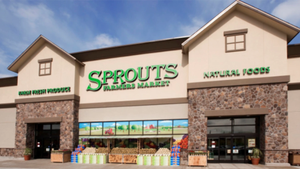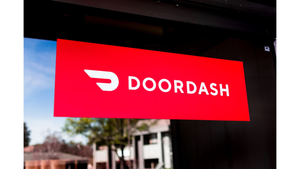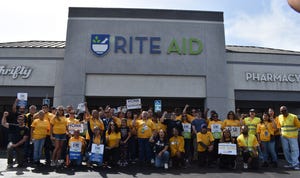Disposable income?
January 1, 2018
Retailers need to stay focused and flexible when merchandising the challenging disposable baby products category. By Craig Levitt Birth rates are down, unemployment is up and many manufacturers of disposable baby products are feeling the pinch. Once thought of as recession proof, the disposable baby products category has endured steady sales declines in recent years. “The economy is having a significant impact on the overall baby care category,” says Chris Ferdock, vice president of marketing for Duluth, Ga.-based Associated Hygienic Products (AHP), manufacturer and marketer of disposable baby diapers and training pants. “Specifically we have found a substantial drop in the buying rate for disposable diapers.” While sales are down, the disposable baby products category is still a nearly $3.5 billion industry, led by the disposable diapers segment, which accounts for more than 72% of sales. Industry observers say there are some opportunities that retailers can focus on to increase their share of the diaper category. Destination or convenience? For the grocery channel, which observers estimate accounts for almost 45% of disposable baby product sales, it is important that retailers figure out exactly what type of retailer they want to be for the category—destination or convenience. Once that is determined, retailers can build their assortments to fit the needs of their target shoppers. “[For food retailers] one size does not fit all,” says Tricia Higgins, baby care external relations manager for Cincinnati-based Procter & Gamble. “In a destination supermarket, having a wide variety to meet the various shoppers’ needs is critical to keeping that mom returning to the store. This mom is typically looking for a two- to three-week supply. In a convenience supermarket, it is important to have the right pack sizes that meet the needs of playing the ‘fill-in trip’ role.” Smart retailers will also cater to specific consumers. For example, Hispanic births in the U.S. are on the rise. In its March 2011 Disposable Baby Products report, Chicago-based research firm Mintel estimates that nearly 24% (23.8%) of Hispanic households have a child under six, compared to just 12% of non-Hispanic households. “The latest census results show that one in three births in the U.S. are to a Hispanic family, therefore making sure grocery retailers are speaking to [that consumer] in a way that delights her is key to driving increased sales in the future,” says Higgins. To appeal to Hispanic mothers, P&G and its Pampers brand recently launched its “Every Little Miracle” campaign, which provides Latina moms with ongoing support and resources for their babies’ development. As part of the campaign, Pampers unveiled a mural in Los Angeles honoring Latino babies with real-life “miracle” stories as told by their families. For the grocery channel, communicating with all types of consumers in a powerful and meaningful way is crucial. Part of that communication includes listening, particularly to the multitude of “mommy bloggers.” In fact, according to data from Mintel, many parents consider blogging, a more reliable source of product information than traditional marketing. As a result, many parents looking for unbiased recommendations are turning to blogs for product reviews, suggestions and information. “In the diaper category, it is important to listen to moms and dads and bring them new innovations on a regular basis that meet their needs,” says Higgins. “Right now, Pampers Cruisers have been updated with new product graphics, a longer absorbent area and we’ve brought the soft outer-cover [backsheet] from Swaddlers over to Crusiers. All of these upgrades were a result of what parents told us they wanted.” Getting the right fit While new diaper features are beneficial, a diaper can only work if it is actually on a baby. The way babies can twist and squirm can often make securing a diaper quite difficult and aggravating. The Kimberly-Clark Corp. is trying to make the entire diaper changing process easier with its Huggies Little Movers Slip-On Diapers. Officials for the Dallas-based company say Little Movers Slip-On Diapers are the category’s first disposable diaper that slides on just like underwear. Kimberly-Clark officials add that the diaper design includes stretchy sides that deliver a quick change and close comfortable fit, on the first try, while offering the same leakage protection of other Huggies products. “No doubt it is a challenge for parents to change diapers when babies are constantly twisting and turning,” says Bob Thibault, president of North American baby and child care brands for Kimberly-Clark. “According to a recent consumer study conducted by the Huggies brand, more than 60% of moms say their baby is very active and struggles to get away during a diaper change.” Huggies Little Movers Slip-On Diapers are available in sizes three through five (16 to 28 pounds). As part of its Every Little Bottom campaign, Huggies recently introduced a limited-edition Little Movers Camo Diapers. Currently available only at Walmart, for every pack of Huggies Camo Diapers purchased the Every Little Bottom program will help a baby in need by donating to Operation Homefront, which provides emergency assistance to the families of service members and wounded warriors. Decision point While it is important to communicate with consumers and understand their needs, it is also important to understand consumers’ decision-making processes. For example, AHP’s Ferdock says there are two distinct shoppers: the private label brand buyer and the national brand buyer. AHP research indicates there are significant differences between the two. “The age-old approach of blindly following national brand product design and packaging is no longer effective with today’s mother,” he says. He adds that the private label consumer is also very loyal, which can be an advantage to retailers as they build their differentiation strategy. “At AHP we are focused on product innovation and competitive points of differentiation to capture moms attention in an attempt to drive trial,” says Ferdock. “The recession has driven increased demand for private label products. Our goal is to consult with our retail partners to determine SKU optimization for their channel and their corporate strategy.” Another maker of private label diapers, First Quality, also offers retailers a diaper program at value prices. Dan Murphy, vice president of sales for the Great Neck, N.Y.-based company, says that for more than 20 years, First Quality has committed to investing in advanced technologies, from manufacturing to distribution, in order to drive innovative product developments and product quality. In the current economy, he adds, providing a cost-effective option to mothers is very important. “Savvy mothers who try [our] high-performing, quality store brands during times of need, will be more likely to be brand loyal once the purse strings are loosened,” says Murphy. Wiping up As disposable diaper sales decrease, sales of baby wipes and baby cleaning and care products continue to rise, according to data from Mintel. Accounting for about 15% of the disposable baby category, baby wipes are up 3% while cleansing and care products are up nearly 2%, accounting for almost 13% of the category. Some say the growth of the two segments, particularly wipes, is due to expanded usage opportunities. “Considering market trends as a manufacturer, we try to expand the functionality of our products so our baby wipes can be used as skin refreshers, moisturizers and on-the-go wipes,” says a spokesperson for U.S. Nonwovens Corp., based in Brentwood, N.Y. “We also work on product improvements to increase our share versus branded products.” Officials at U.S. Nonwovens add that as quality continues to improve consumers are looking for softer thicker wipes with a plush and luxurious affect as well as more sensitive and natural products.
About the Author
You May Also Like




